Rhino vs Traditional Repairs
Rhino Carbon Fiber is the Best Repair
There are several ways to repair a basement with bowing walls. However, we believe that the Rhino Carbon Fiber Wall Support System is the best way to repair a bowing basement wall. This page will outline for you the several traditional methods and then other carbon fiber systems that a contractor may use to repair your foundation.
Let us prove to you why Rhino Carbon Fiber is the best repair method.
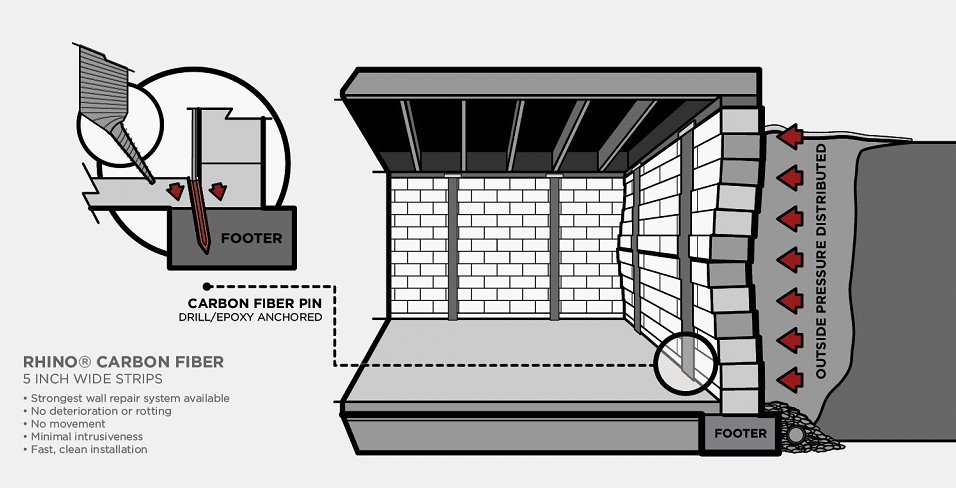
Disadvantages of Traditional Bowed Basement Wall Repair Methods
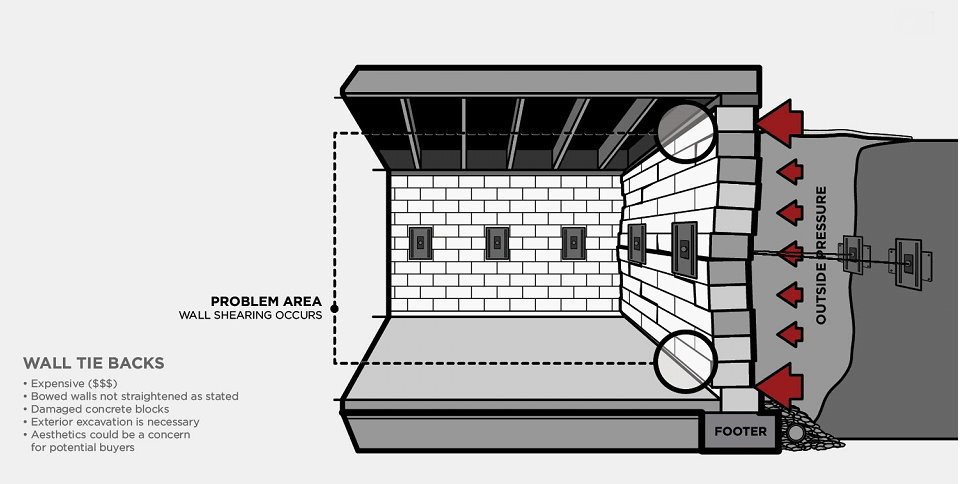
Wall tie backs are used to pull the wall straight. This is accomplished by excavating on the outside of the home with trenches. These trenches have anchors placed in them. A rod extends from the anchor, through the wall and attaches to a steel plate on the inside with a nut. The nuts are then tightened to pull the wall straight.
Wall Tie Back Disadvantages:
- Expensive ($$$)
- Bowed Walls not straightened as stated
- Damages concrete block
- Exterior excavation necessary
- Poor Aesthetics
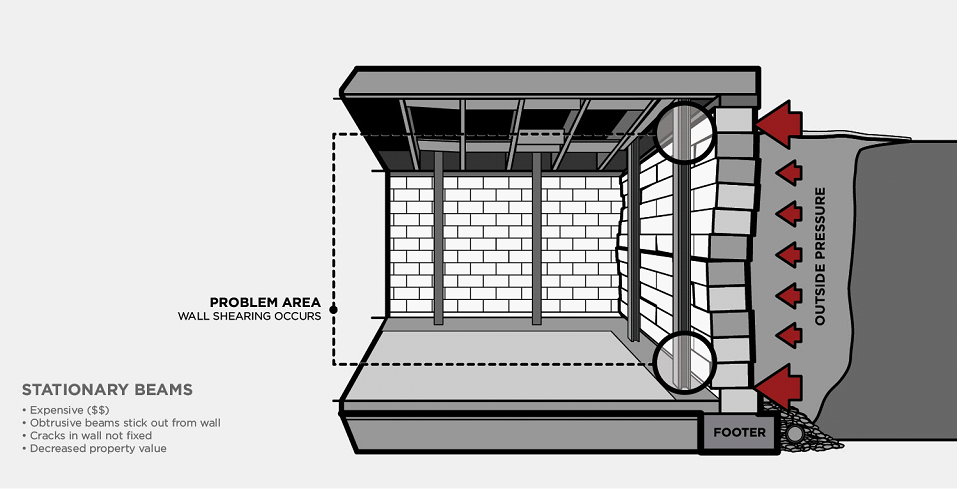
Stationary beams use steel I-beams to hold the wall in place. The beams are bolted to the footing of the basement. This requires excavating through the basement floor. The top of the wall is attached to the first floor joists. The steel beam only touches at the most bowed part of the wall. This allows further movement.
Stationary Beam Disadvantages:
- Expensive ($$)
- Obtrusive Beams
- Beams do not touch the entire wall face
- Cracks in the wall not fixed
- Concrete floor excavation
- Decreased property value
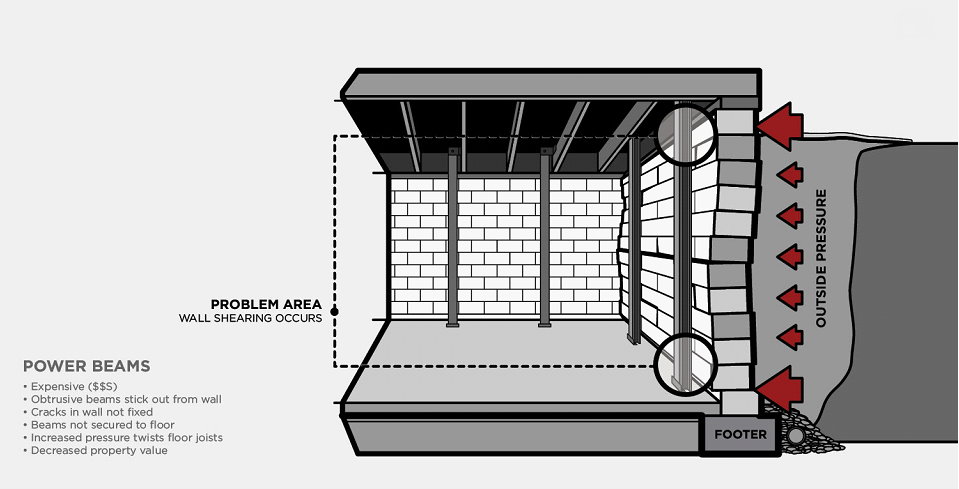
Power beams are attached to the subfloor and basement floor. Bolts are tightened at the top and bottom. These bolts are intended to push against the basement wall. Eventually the wall is supposed to be pushed back into place. In some applications this force can exceed the strength of the concrete block and break the block itself.
Power Beam Disadvantages:
- Expensive ($$$)
- Obtrusive beam sticks out from the wall
- Cracks in wall not fixed
- Beams not secured to the footing
- Increased pressure twists floor joists
- Can damage the concrete block
- Decreased property value
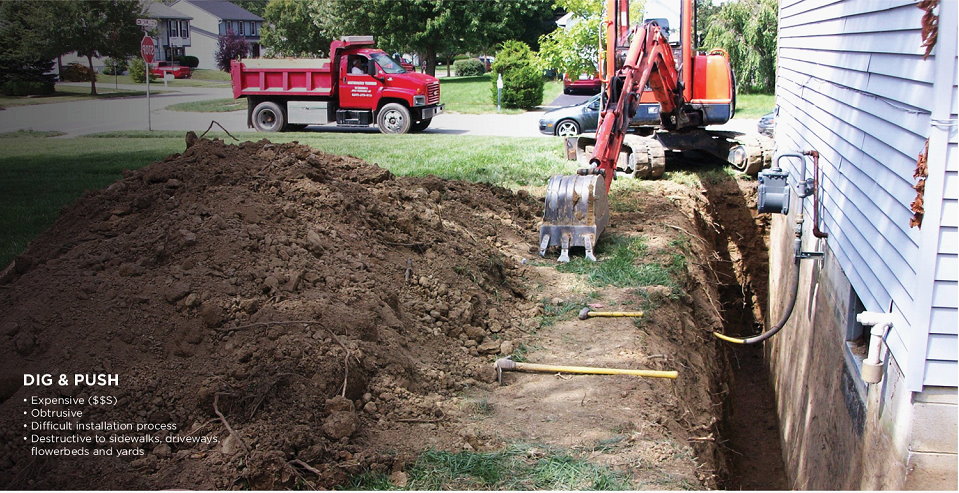
As the name suggests, the foundation is totally excavated on the exterior. Then on the inside hydraulic jacks are used to push the wall back into place. Steam beams are then installed to stop the movement from happening again.
Dig and Push Disadvantages:
- Expensive ($$$)
- Obtrusive
- Difficult process
- Destructive to the sidewalk, driveways flowerbeds and yard

- Strongest wall repair-Over 51,000 psi tensile strength
- No deterioration or rotting
- No movement
- Minimal intrusiveness
- Fast, clean installation
The Rhino Carbon Fiber Wall Support System is the best on the market.
